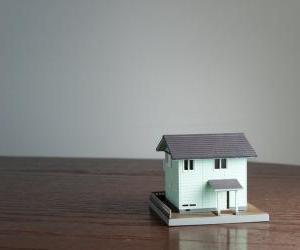
Designing a comfortable home atmosphere for adults with autism
Jenny Wise
Email successfully sent
close windowIt's clear that people with autism experience the world differently. It can be both empowering and debilitating at the same time. By creating a comfortable living environment, you can reduce the number of daily challenges you have to deal with. It will enhance your opportunity to explore your interests and pursue long-term skills. Of course, every person on the autism spectrum has a different experience, so make sure you tailor these tips to suit your own personal preferences.
Declutter
Clutter can be a particular source of distress for people with autism because of the overwhelming sensory stimulation it causes. Practicing minimalism and avoiding messy behavior can help you think more clearly and make better sense of your surroundings. This means reducing knickknacks and collections, removing unnecessary items from the home, and keeping everything sorted neatly into organized cupboards and drawers. Even if your storage spaces are well-organized, doors and curtains can help you avoid overbearing sensory input. Shelf units with baskets can be a good way to organize your things out of sight while still keeping them easily accessible.
Give Each Room a Purpose
According to The Conversation, many people with autism find that dealing with unpredictability is one of their biggest challenges. Try giving each room in your house an obvious purpose with clear boundaries between them. For example, create a specific space for eating, rest, work, and your special interests. This will allow you to focus on particular activities when you’re in each room, helping you gain greater independence as you fall into comfortable routines. Structuring your life with well-defined tasks can help you cope with surprises and distractions. You can use notepads, labels, notice boards and to-do lists to organize the purpose of each room in your home.
Reduce Noise
People with autism deal with a variety of noise hypersensitivities, from problems with specific sounds to general background noise. As a result, noise can be particularly overwhelming, causing extreme stress and anxiety. Although it's difficult to control sounds out in the world, it can be extremely beneficial to use noise reduction strategies in your own home. Carpets are better than bare floors for absorbing sound and controlling all types of noise. If replacing your floors is unrealistic, you can add large area rugs to living spaces. Also, try adding noise-reduction foam to your walls to block incoming sounds from shared walls. Check out this article by Redfin for additional modifications you can make to soundproof your home.
Decorate with Soothing Colors
Autism often causes colors to appear much more vibrant and intense. It can be painful and irritating to people on the spectrum, overwhelming them with visual stimulation. Paint the walls in your home in soothing tones to reduce eyestrain and feelings of agitation. Soft greens, blues, and light hues of pink are particularly good options. Monochromatic color schemes in natural hues can help create a calming environment in any room. If you're looking for something a little more colorful, try to balance cooler tones of blue, violet and turquoise.
Use Calming Lighting
Bright light overloads the senses and can cause painful responses in people with autism. Fluorescent lights have an especially negative effect. TheraSpacs recommends taking advantage of indirect natural lighting and incandescent bulbs instead. Try installing dimmable lights so that you have the control to reduce light exposure when it becomes overstimulating. And, if lights are buzzing or flickering, replace them immediately. You can also set up your work or hobby areas near big windows to take advantage of natural light.
These suggestions can help you compensate for unwelcome and even painful stimuli in your home environment. Your home should be a place of refuge and contentedness, so make sure your décor allows this. Finally, be sure to keep open communication with other people in your family about what they can do to help reduce sensory overload in the home.
Related Articles
Hidden holidays
My favorite holiday just passed. The crisp fall air was alive with excitement, music, and the laughter of ecst ..
When a child gave me hope
We all know how difficult it is for a differently-abled individual to navigate the world with its prejudices. ..
Autism and eight tips for discussing a death in the family
Relating the fact that a loved one has passed is difficult for any parent but can be especially burdensome for ..

